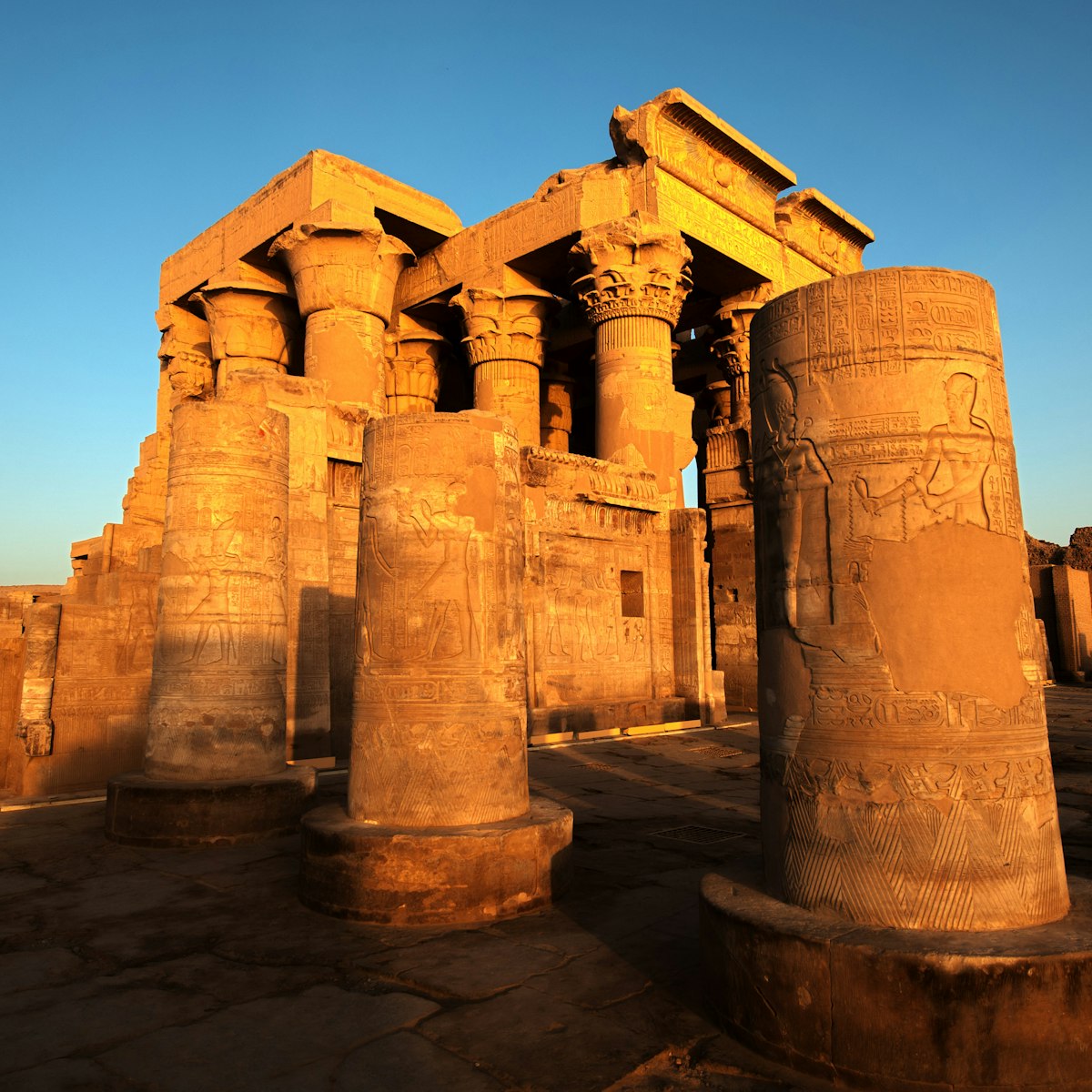At Gebel Silsila, the Nile narrows considerably to pass between steep sandstone cliffs, cluttered with ancient rock stelae and graffiti. The good quality sandstone quarries here were systematically worked during the New Kingdom, when huge teams hacked out blocks that were floated down the Nile to Luxor to be used in buildings such as the temple complex of Karnak and the Ramesseum.
Known in Pharaonic times as Khenu (Place of Rowing), Gebel Silsilla was an important centre for the cult of the Nile: every year at the beginning of the inundation season, sacrifices were made here to ensure the fertility of the land. The Nile at its height flowing through the narrow gorge must have been a particularly impressive sight, and noisy, which no doubt explains why the location was chosen as a cult centre. The gorge also marks the change in the bedrock of Egypt, from limestone to sandstone. The sandstone quarries here were worked by thousands of men and from the 18th dynasty or earlier through to the Roman period. The quarries were for centuries the main source in Egypt of material for temple building.
The most attractive monuments are on the west bank, where the rocks are carved with inscriptions and tiny shrines from all periods, as well as adorned with larger chapels. The southern side of the site is marked by a massive pillar of rock, known as the ‘Capstan’, so called because locals believe there was once a chain – silsila in Arabic, from which the place takes its name – that ran from the east to the west bank. Nearby are the three shrines built by Merenptah, Ramses II and Seti I during the New Kingdom. Further north, the main quarry has clear masons’ marks and a group of elaborate private memorial chapels. Several stelae, including a large Stelae of Shoshenq I, mark the northern limit of the quarry. Near the entry to the site is the Speos of Horemheb.
The east bank is out of bounds, but looking across from the west bank one gets a real sense of the grandeur and scale of what the pharaohs undertook, especially the huge passageway cut into the hillside.
The best way to get to Gebel Silsila is by felucca or dahabiyya between Aswan and Esna. Alternatively, hire a private taxi at Edfu and take the west-bank valley road to Silsila.



